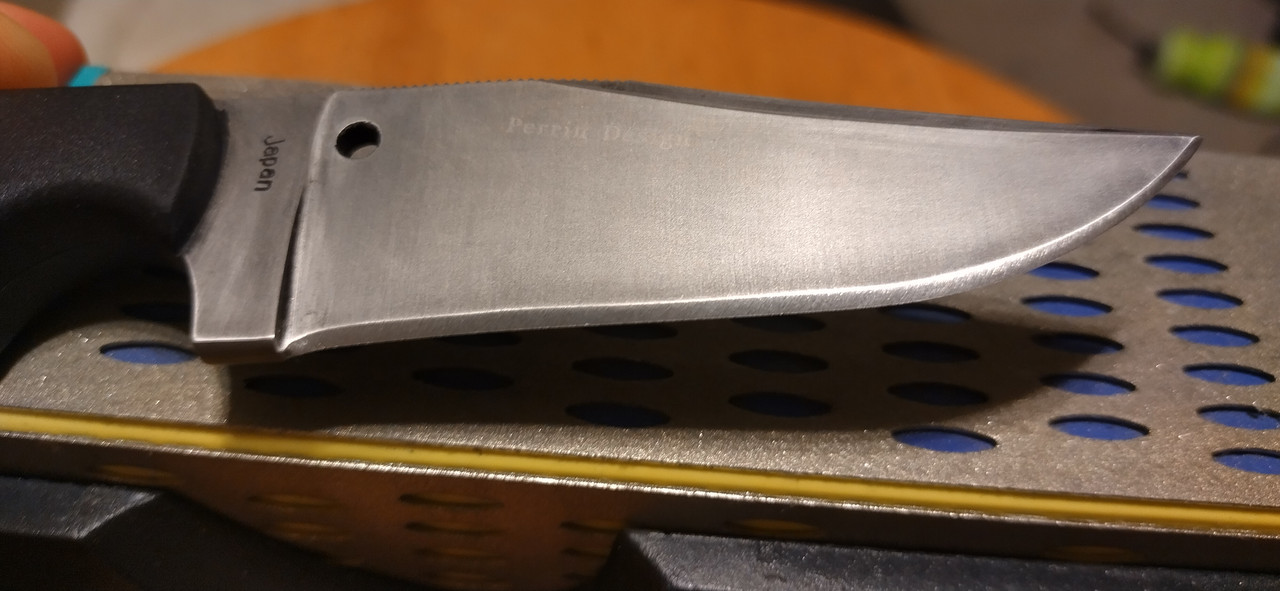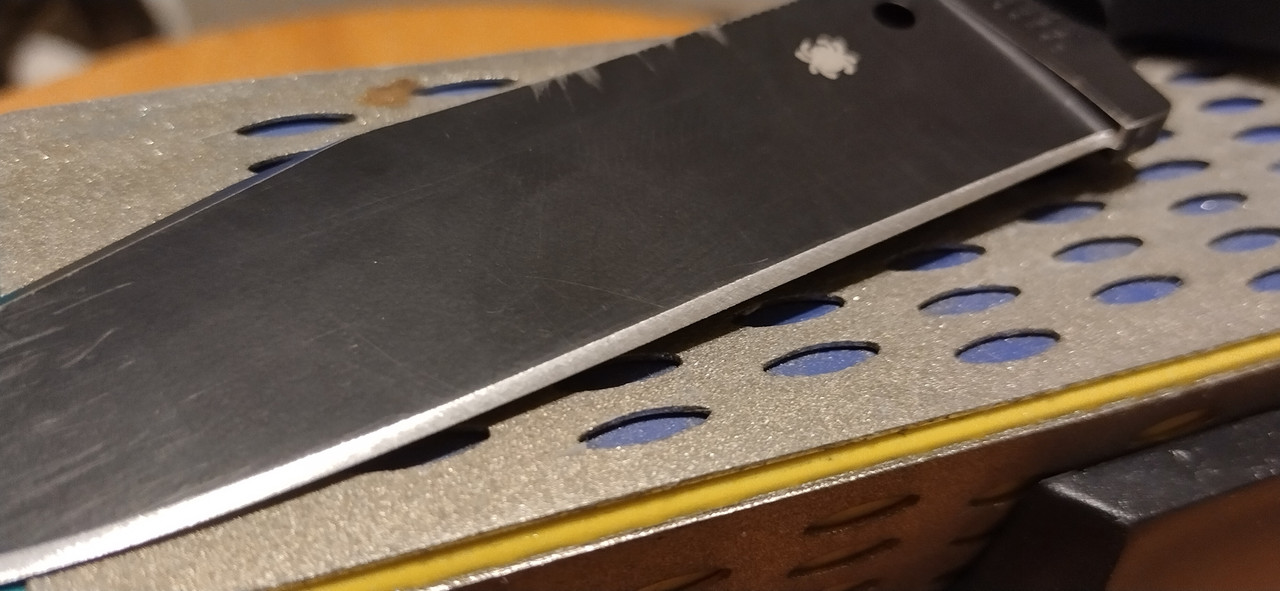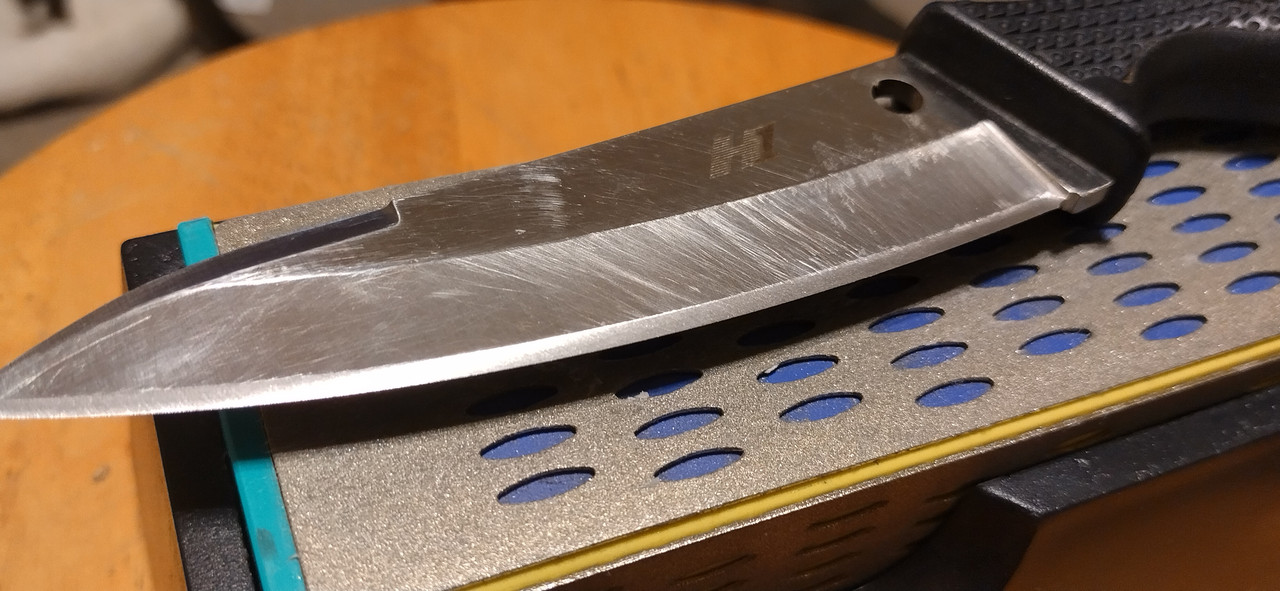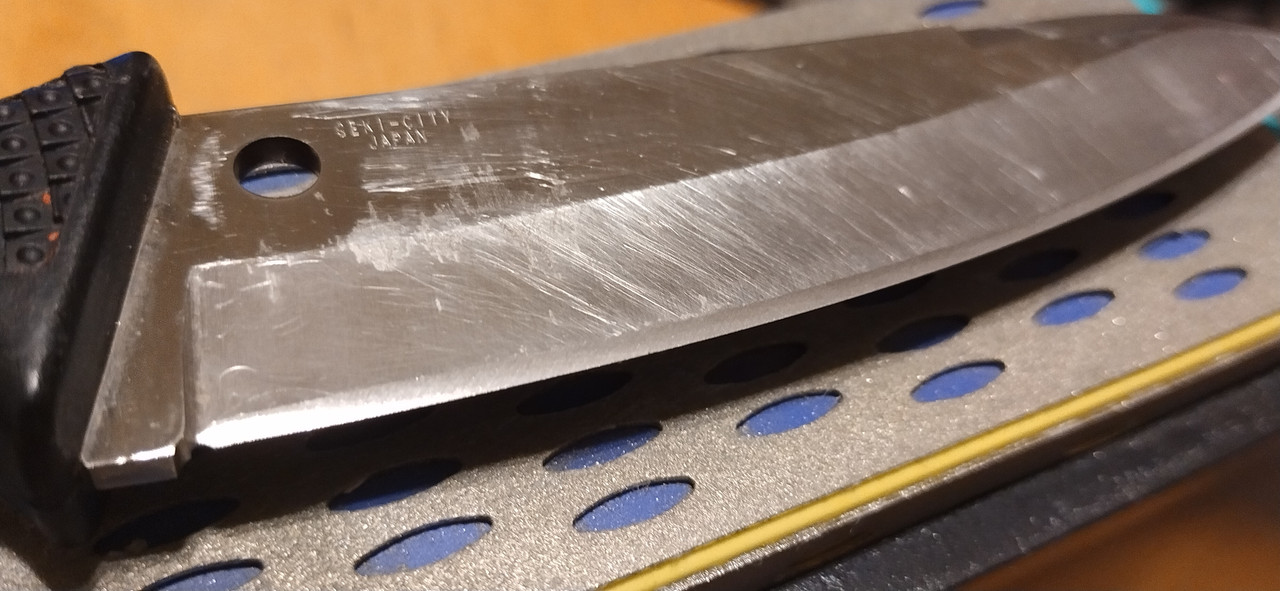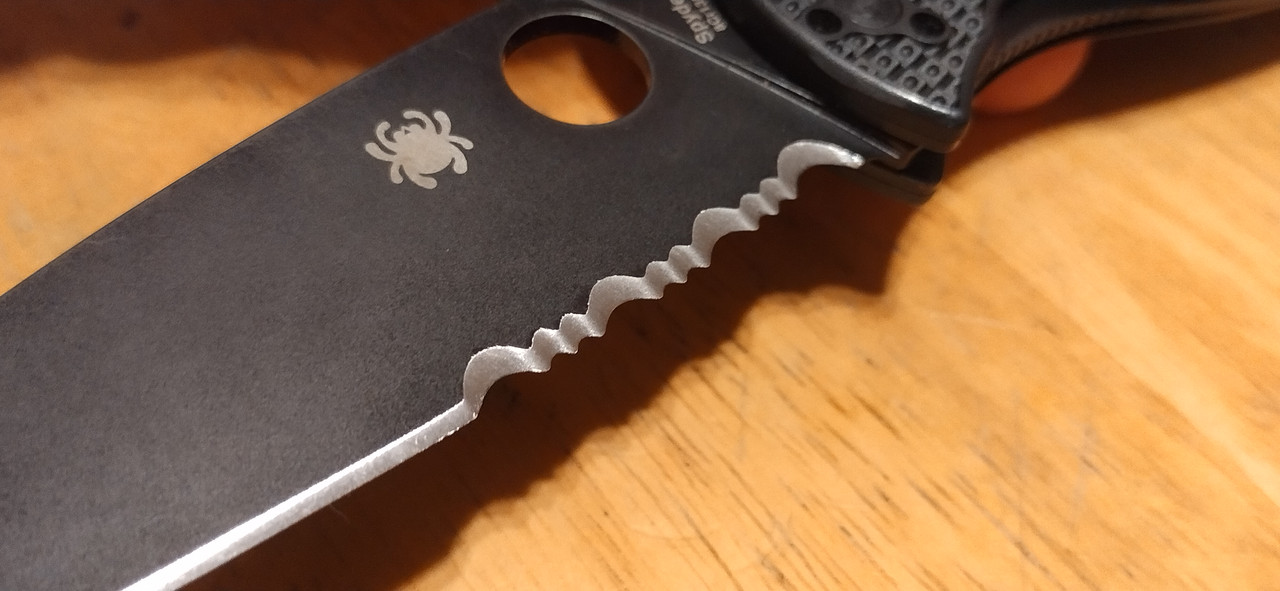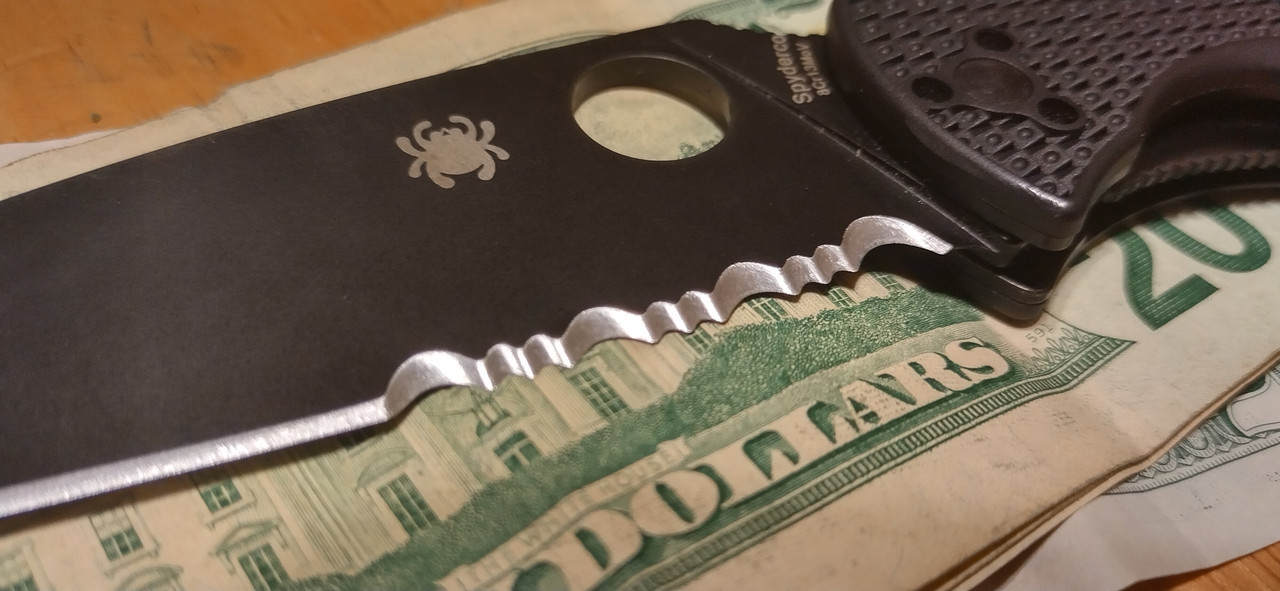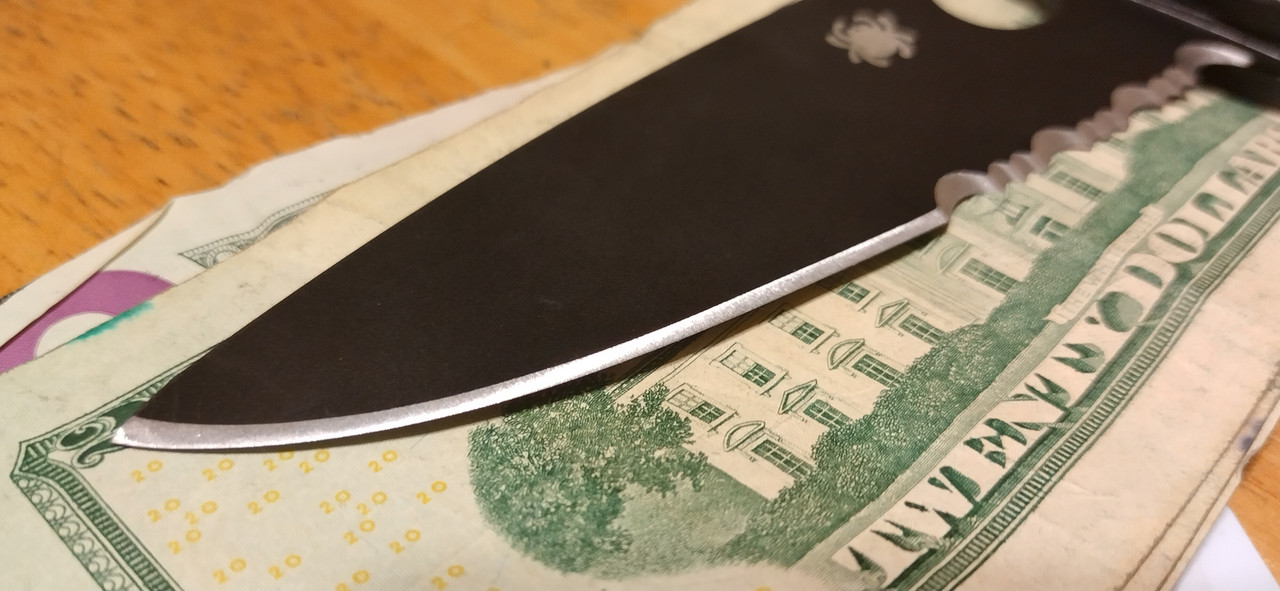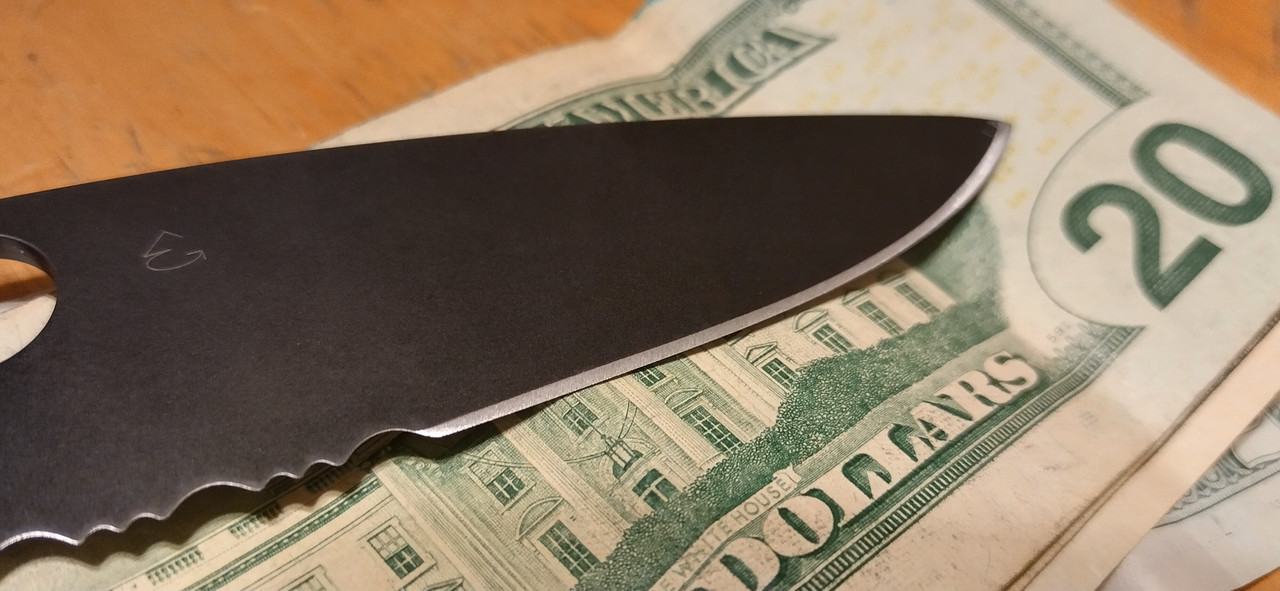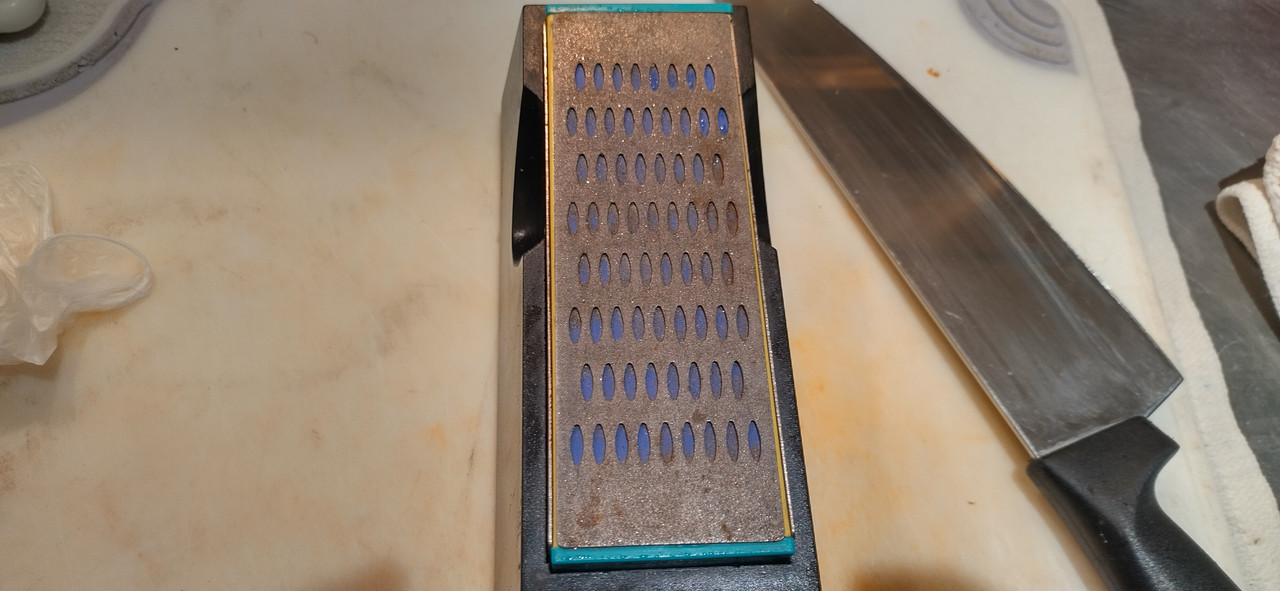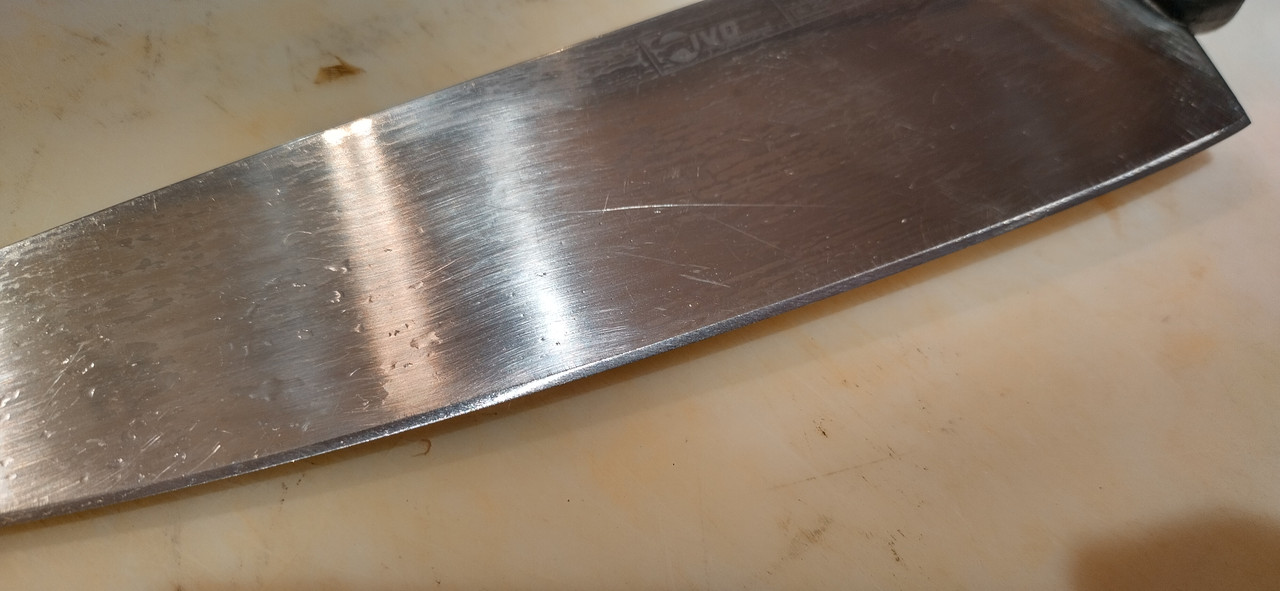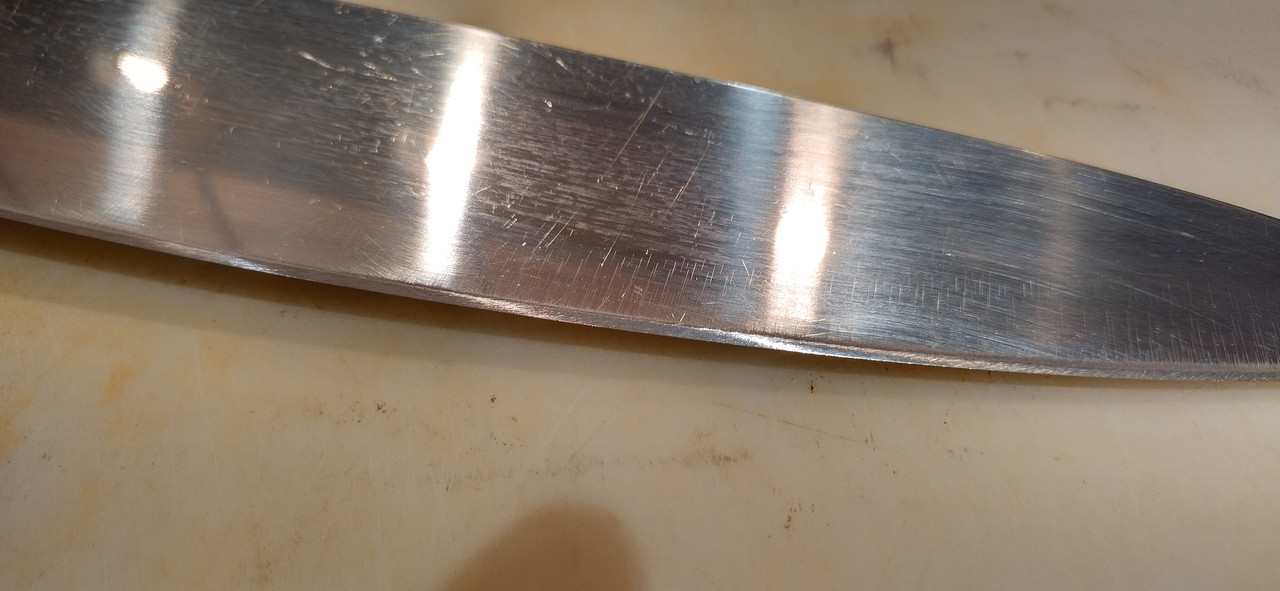metaphoricalsimile wrote: ↑Wed Jul 20, 2022 2:40 pm
I would also love to discuss a topic that I don't see much:
Fresh vs. broken-in diamond stones. There's a lot of discourse about course edges (especially from diamond stones) on this forum, but in my experience getting a good edge on diamonds pre-supposes a very broken in stone, and that just never seems to get mentioned. I have another worksharp 600 grit stone that I haven't done much work with and it will straight up *destroy* the apex on a knife, due to the "second layer" of diamonds that are adhered to other diamonds but not to the steel matrix. Until that layer is broken off I find diamond stones to be more frustrating than helpful, and I feel like people should know that if they're going to buy a diamond stone and expect to get an edge like Vivi straight out of the box.
There's definitely a big difference between fresh vs worn stones.
Even sharpmaker rods will wear down. They'll work for decades as I can attest to, but a ten year old sharpmaker rod will leave a much finer finish and work more slowly than a fresh one.
I have DMT plates that are pushing 20 years old at this point. They still put very nice edges on my knives. A really old fine DMT continuous I don't use much these days, and an X Coarse with the holes in the surface that was my favotite stone for a while.
The X Coarse was the one I experimented with after realizing medium sharpmaker edges work better for me than ultrafine. It worked better than the medium finish. It's since been replaced by the harbor freight stones.
I cycle those $12 harbor freight stones. I don't have my most worn one handy as I keep it next to my knife roll at work, but here's the one I use at home VS a brand new one:
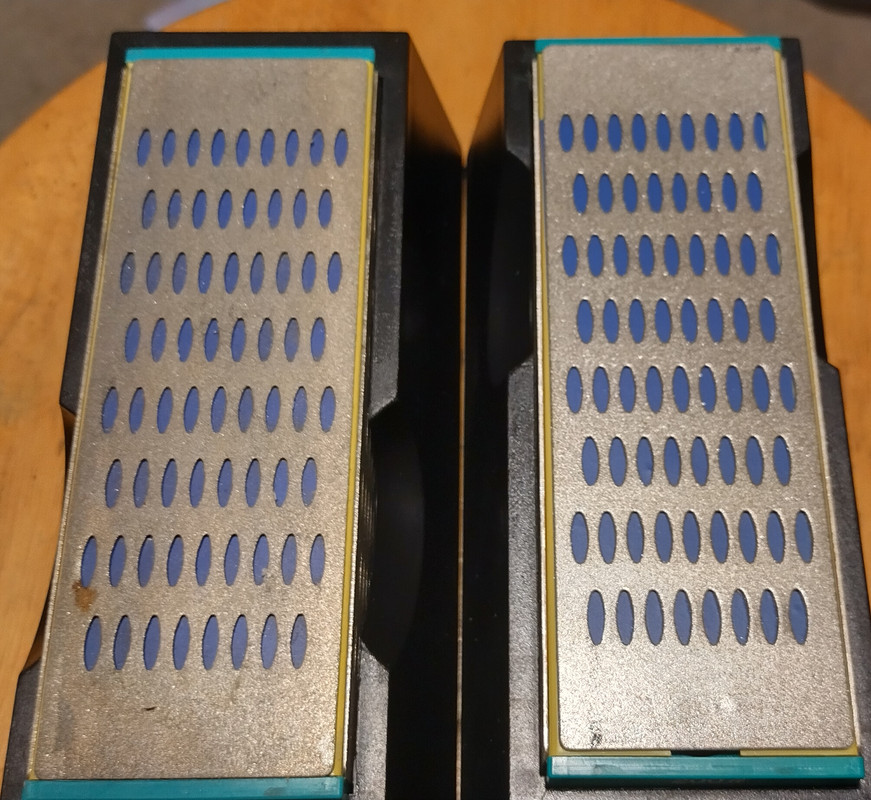
On these 4 sided diamond stones I typically use them as follows:
200 grit side - reprofiling
300 grit - final edge
400 grit - typically not used, been trying it out at work lately
600 grit - never used, not a fan of how polished it is
I've experimented with 200, 300 and 400 grit edges, and I like 200 & 300 the best.
I generally go with 300 grit for the final apex because the 200 grit side gets broken in fast after re-edging a few knives.
I've compared worn versions next to brand new ones. The worn ones give a finer edge comparing the same grit to a fresh one, as you'd expect.
I've got 4 at the moment. Two brand new back-ups, my first one I use at work, and a newer user I keep at home.
I like the more aggressive edges I get from the fresher stones. Which is the main reason I use 300 grit for the final edge.
For a while I kept two of these in use at home and would reprofile with one 200 grit, and use the fresher one for touch-ups and final apexing.
My baseline expectation is "clean scrape shaving" off the 200 grit side fresh out of the package, and hair popping sharpness off the 300 grit side.
They also used to sell a set of three plates, 180 grit, 260 and 380 IIRC. I experimented with those too.
Big fan of the 260 for final edges. The 180 cuts a little faster than the 200 grit side of the four sided stone, but it's also less stable and need re-adjusted every so often so it works slower all things considered.
-----------------------------
I'm still using the same edge on my Pacific Salt as when I updated that microscope thread.
viewtopic.php?p=1635813#p1635813
Parts of the edge still scrape shave a month later.
Touched up some knives tonight and it took some self control to not touch up the Pacific. While it still cuts well it isn't at the level of a fresh edge. But I want to use it until it stops working and see how long that takes.
----------------
I've been considering putting up one of my hand sharpened Pacific Salts for a pass-around, and including one of these stones.


